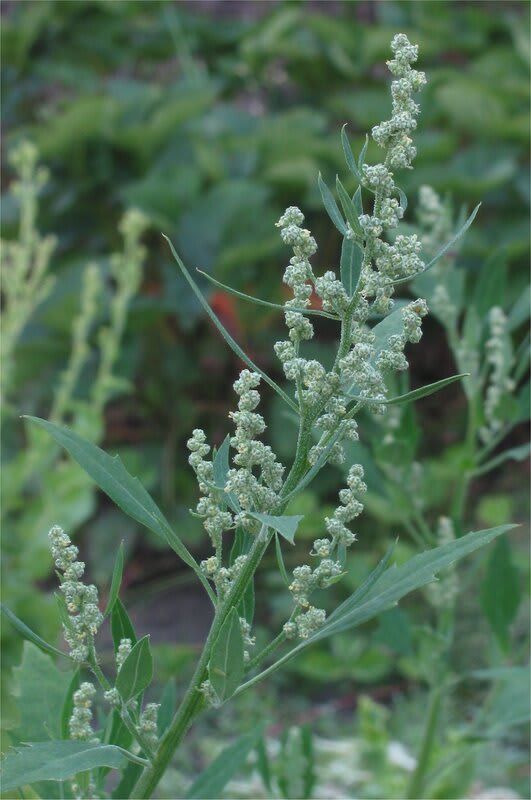White Goosefoot, Lamb's Quarters, Fat Hen, Pigweed, Wild Spinach
Chenopodium album

🌿 Morphology
🌞 Growing conditions
🌍 Origin and family
🌾 Uses
Warning: Despite the care taken in writing this sheet, it is essential to cross-reference sources before using or consuming any plant. When in doubt, consult a qualified professional
Permaculture uses
Leaves and young shoots are edible, tasting similar to spinach. Seeds can be ground into flour. Used as a green manure. Attracts beneficial insects. Several cultivars exist with improved flavor or growth habits. Can be used as a trap crop for certain pests.
Permapeople description
Chenopodium album, commonly known as lambsquarters, is a fast-growing annual plant considered to be an invasive weed. It is edible and nutritious, and is often used as a leafy green vegetable. Lambsquarters can grow up to 1.5 meters tall and has broad, oval-shaped leaves. It produces small, green flowers that turn into tiny black seeds.
Botanical description
Chenopodium album is an annual herbaceous plant in the family Amaranthaceae. It grows erect, reaching heights of up to 6 feet. The leaves are alternate, rhomboid to lanceolate, and often have a grayish-white powdery coating, especially on the underside. Small, green flowers are produced in dense clusters at the ends of the stems. The plant readily self-seeds.
Companion planting
Generally considered a weed and not intentionally companion planted. Can compete with crops for resources. Some believe it can draw minerals from the soil and make them available to other plants after it decomposes as a green manure.
Propagation methods
Primarily by seed. Self-sows readily. Seeds can be directly sown in spring or started indoors. Cuttings are not a common method of propagation.
History and traditions
Lamb's Quarters has a long history of use as a food source in various cultures, dating back to prehistoric times. It has been found in archaeological digs in Europe and is still consumed in many parts of the world. Traditionally, it has been used medicinally as a treatment for various ailments, including skin conditions and digestive problems. In some cultures, it's considered a weed, while in others, it's cultivated as a vegetable.
Usage calendar
Flowering: Summer to Autumn. Harvesting leaves: Spring to Autumn. Harvesting seeds: Autumn. Planting: Spring after last frost. Pruning: Not generally pruned, but can be thinned to encourage larger plants.
